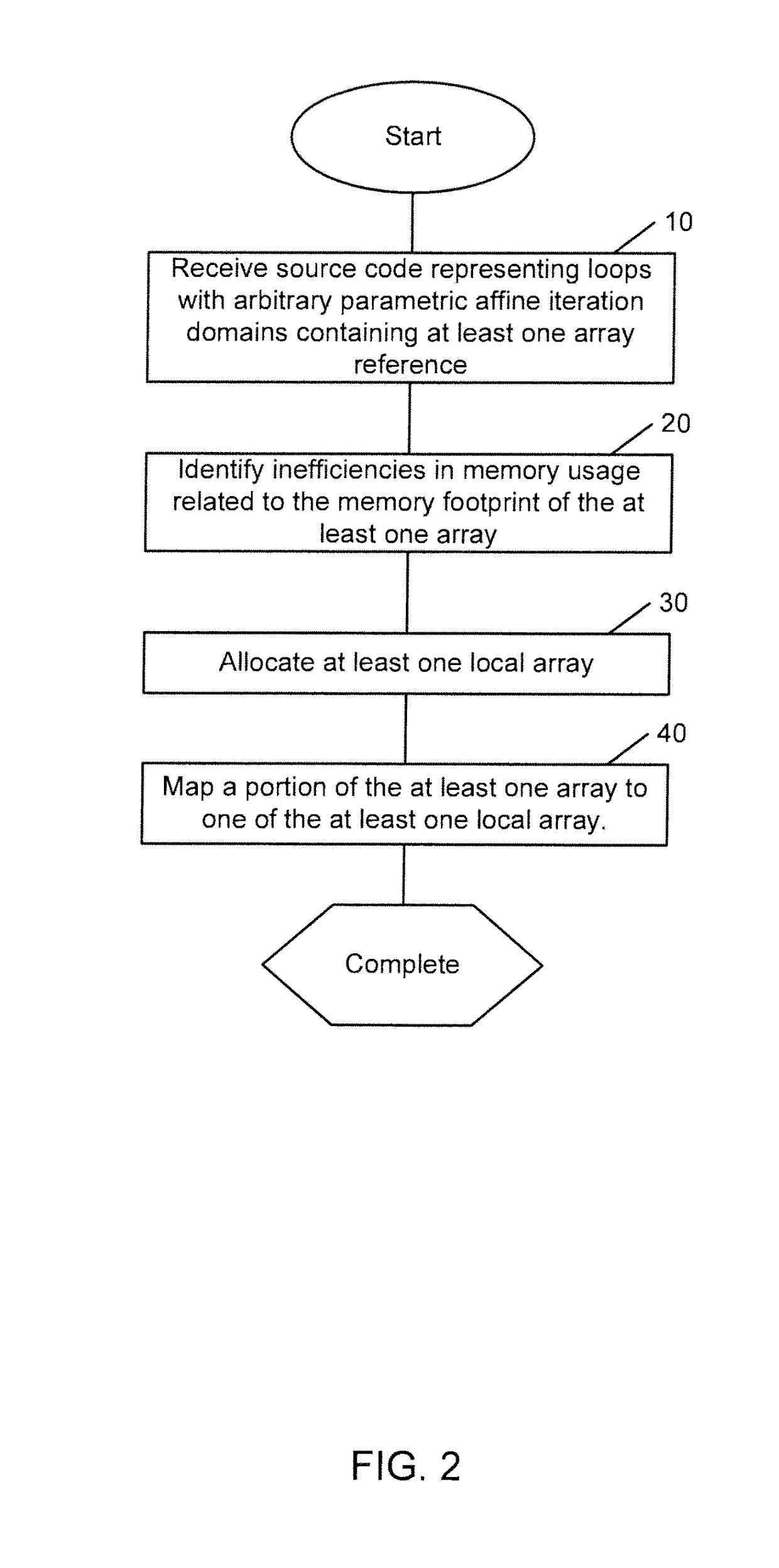Methods and apparatus for data transfer optimization
a data transfer and optimization technology, applied in the field of computer programming, can solve the problems of poor scalability of the compilation process, speed and bandwidth of the memory subsystem, and the current commercially available compiler cannot efficiently take advantage of the increase in computational resources, so as to reduce the requirements for memory siz
- Summary
- Abstract
- Description
- Claims
- Application Information
AI Technical Summary
Benefits of technology
Problems solved by technology
Method used
Image
Examples
example
[0129]Consider the following communication operations / commands embedded in a loop nest:
[0130]
double A[128][128];double B[128][128];double A_l[16][16];double B_l[16];double C_l[16][16];for (i = ...) { for (j = ...) { ... get A_l[k][l] from A[16 * P + k][16 * i + l] for 0 get B_l[k] from B[16 * j + k][16 * i + k] for 0 get C_l[l][k] from C[16 * P + k][16 * i + l]; for 0 wait 0; ... }}
In each iteration of i and j, a rectangular 16×16 block of A is fetched into A_1, a diagonal segment of B is fetched into B_1, and another rectangular 16×16 block of C is fetched into C_1, but with its rows and columns permuted, i.e., a corner turn.
[0131]For these operations, one possible mapping, using DMA operations for data transfers, as shown in FIG. 10, is as follows:
[0132]
for (i = ...) { for (j = ...) { ... dma_get{src=&A[16*P][16*i], dst=&A_l[0][0], count=16, bytes=16*sizeof(double), srcStride=128*sizeof(double), dstStride=16*sizeof(doubl...
PUM
 Login to View More
Login to View More Abstract
Description
Claims
Application Information
 Login to View More
Login to View More - R&D
- Intellectual Property
- Life Sciences
- Materials
- Tech Scout
- Unparalleled Data Quality
- Higher Quality Content
- 60% Fewer Hallucinations
Browse by: Latest US Patents, China's latest patents, Technical Efficacy Thesaurus, Application Domain, Technology Topic, Popular Technical Reports.
© 2025 PatSnap. All rights reserved.Legal|Privacy policy|Modern Slavery Act Transparency Statement|Sitemap|About US| Contact US: help@patsnap.com



